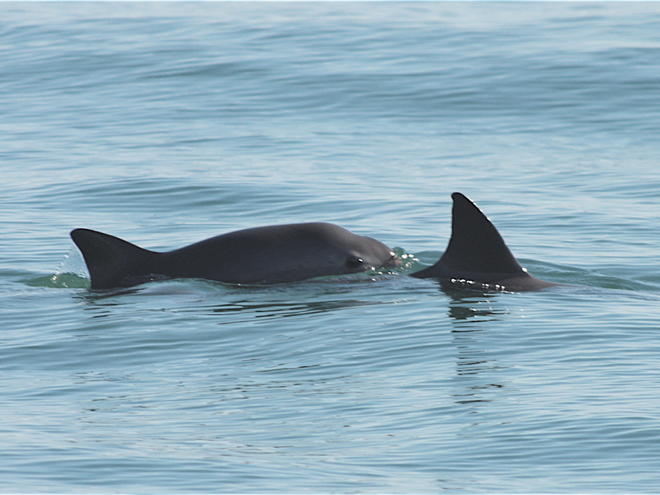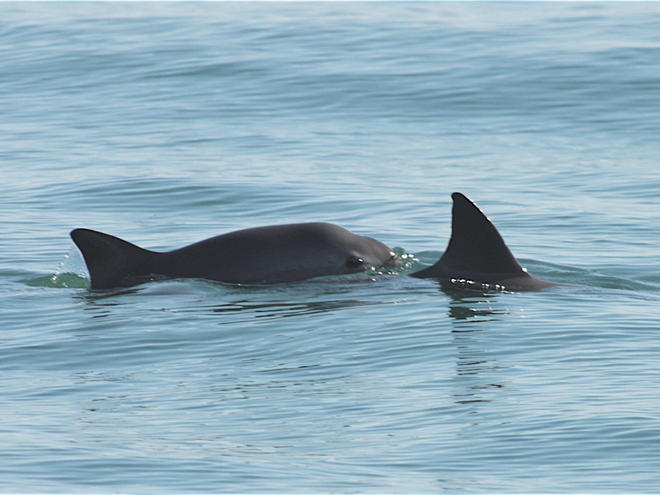The vaquita: 5 Facts about the most endangered marine mammal
Published by the World Wildlife Fund

1. How many vaquitas are left?
A survey released earlier this year estimated the vaquita population was as low as 30 individuals. An all time low for the porpoise, the population is half of what it was just the year before. And a 97% drop from the year before that.
2. What do vaquitas look like?
The world’s smallest porpoise, vaquitas measure up to five-feet long and weigh up to 120 lbs. The vaquita’s unique facial markings of a black ring around each eye and black curved lips have been compared to a smiling panda. They are dark gray on their dorsal (top) surface with pale gray sides and a white underside with light gray markings. Newborns generally have darker coloration.
3. Where do vaquitas live?
Vaquitas only live in the northern end of Mexico’s Gulf of California. Besides the vaquita, the Gulf of California has tremendous biological and economic importance. It supports an extraordinary diversity of marine life including sharks, whales, marine turtles, and many species of reef fish. The Upper Gulf of California is considered globally unique because of its ecological characteristics, enormous biodiversity and the amount of species that live in this area.
4. Why are vaquitas so endangered?
Unsustainable and illegal fishing practices are the main drivers pushing vaquita to extinction, particularly due to bycatch from illegal fishing. Vaquitas share waters with the much sought-after totoaba fish and fishing nets inadvertently catch and drown the porpoise. Demand for totoaba swim bladders – believed to cure a variety of illness and diseases in Chinese medicine- is driving the vaquita to extinction. The swim bladders are often illegally smuggled over the US border and then shipped to China where it can sell up to USD 8,500 per kilogram in the black market.
5. What can be done to save the vaquita?
Mexican President Peña Nieto’s has committed to protecting the vaquita. But totoaba fishing– the main threat to vaquitas – has continued to increase. And of course, vaquita numbers have dropped to dangerous lows.
The solution is a fully enforced gillnet ban and improved community engagement to save the vaquita and preserve the Gulf of California’s outstanding universal value.
WWF is asking for an immediate, increased response from the Mexican government, World Heritage Committee and CITES Parties, NGOS and civil society groups to protect the last remaining vaquitas and set the Upper Gulf of California on a path to recovery. Failure to act will result in the imminent extinction of the vaquita.
Take action and ask Mexican President Peña Nieto to enforce protection of the vaquita.
All vaquita photos on this page by Thomas A. Jefferson from the joint research project with the Marine Mammals Research and Conservation Coordination of the National Institute of Ecology of Mexico. Photo obtained under permit No. DR7488708 of SEMARNAT (Mexican National Commission of Protected Natural Areas).
Read the full article at: http://feedproxy.google.com/~r/WWFStories/~3/GiwpYZSOFvw/the-vaquita-5-facts-about-the-most-endangered-marine-mammal



